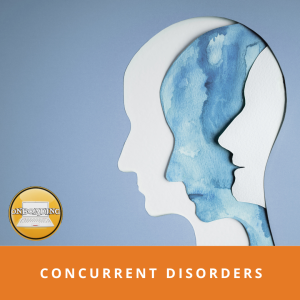Concurrent Disorders: Onboarding NEW

Available Summer ’24
Logistics
Type: Self-Paced / Onboarding
Time to Complete: 90 minutes
Target Audience: Case managers, social workers, outreach workers, nurses, and other professionals working with people experiencing homelessness.
Components
- Videos
- Text
- Exercises
- Knowledge Checks
- Final Assessment
- Course Evaluation
- Completion Certificate
Description
According to Health Canada, concurrent disorders refer to the “combination of mental/emotional/psychiatric problems with the abuse of alcohol and/or other psychoactive drugs” (Health Canada 2002). People with poor mental health are more susceptible to the three main factors that can lead to homelessness: Poverty, disaffiliation, and personal vulnerability. Mental illness can also impari a person’s ability to be resilient and resourceful and cloud thinking and impair judgment. for all these reasons, people with mental illness are at greater risk of experiencing homelessness. In general, 30-40% of people experiencing homelessness have a mental illness. people who have experienced homelessness at some point in their lives are two to three times more likely to report poor mental health. based on 2009 Canadian data, 20-25% of people experiencing homelessness suffer from concurrent disorders. It is essential to recognize that not all homeless individuals or socio-demographic groups experience homelessness in the same way or at the same rate. Factors like personal circumstances, family, dynamics, and systemic issues play a role in homelessness. addressing these complex needs requires comprehensive support and targeted interventions. This module provides learners with an introduction to concurrent disorders and the information and skills necessary to begin to more effectively support people experiencing homelessness along with mental health and addiction disorders. Participants will gain practical knowledge to be able to provide more compassionate care for these vulnerable individuals.
Learning Objectives
- Define and recognize concurrent disorders
- Understand the prevalence and impact of concurrent disorders among homeless individuals
- Learn about screening and treatment models
- Explore the benefits of harm reduction, trauma-informed care, and cultural competence
- Understand the importance of effective case management for people experiencing homelessness as well as navigating complex systems and coordinating services
- Learn about the strength of peer-support roles in supporting those with concurrent disorders
- Explore ethical dilemmas and considerations promoting participant autonomy and dignity
